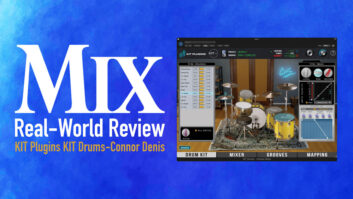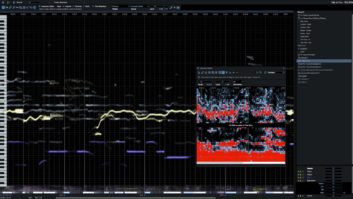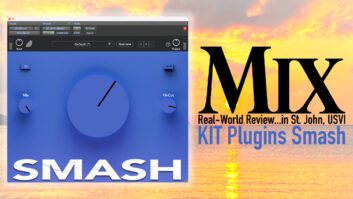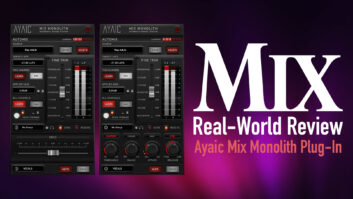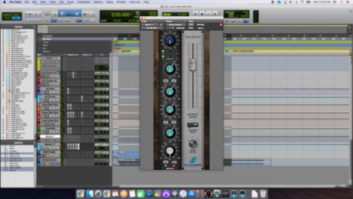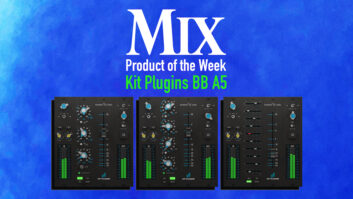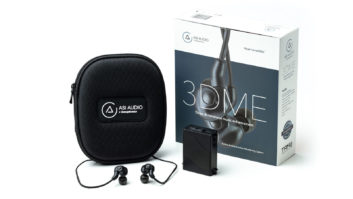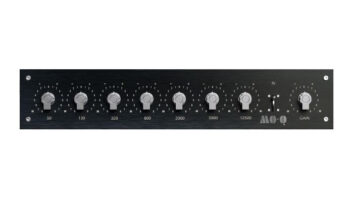
| MIX VERDICT: KIT Plugins BB N73 Preamp/EQ |
| THE TAKEAWAY: “Designed to provide a comprehensive channel strip in the 1073 tradition, the BB N73 does exactly that.” |
| COMPANY: KIT Plugins • www.kitplugins.com PRICE: $150 PROS: • Realistic saturation • Musical • truly sounds good on any source |
Continuing the KIT Plugins tradition, the company has released BB N73, another virtual version of a piece of legendary Blackbird Studio hardware—in this case, the Neve 1073, one of the most iconic and imitated channels in recording history.
The term “British Sound,” some say, originated with the 1073-equipped, 28-channel A88 console that Rupert Neve & Co. delivered to Wessex Sound Studios in the summer of 1970. This was the first desk to be fitted with the Neve model 1073 channel amplifier/equalizer module, a class-A, solid-state preamp with transformer-balanced inputs and outputs. The modules (which were never designed to work outside of a desk) have risen to legendary status over the past five decades.
Blackbird Studio’s John McBride owns a massive collection of the modules, and he hand-selected his favorite 12 to be part of the KIT Plugins N73 modeling. The modeling (accurate from 10 Hz to 96 kHz) incorporates the original module’s channel modifications, cabling and component aging, ensuring the plug-in accurately captures every nuance of the sound of Blackbird’s hardware. As with other KIT Plugins products, the BB N73 supports both mono and stereo signals, and is available in VST3, AU and AAX formats.
SECTIONS AND FUNCTIONS
The BB N73’s resizable GUI is divided into three sections. The left side incorporates the familiar 1073 channel strip layout, the right side includes the output fader and Analog Hum control, and the center section adds metering and a range of plug-in settings. There is also a Top Bar Controls tab along the top of the plug-in window that allows access to the Factory and User preset menu, providing the ability to easily save and load presets.
In addition to a KIT Plug-in library, the BB N73 includes libraries created by Joe Carrell and Lamont Sincere, all including useful presets that provide great starting points to dialing in the perfect sound. The Top Bar Controls tab also includes In/Out Controls, each providing ±36 dB gain adjustment, as well as a link to the online version of the plug-in’s operational manual.
The Preamp Sensitivity control is located at the top of the channel strip layout section. The default setting is Line, and in this mode, the Sensitivity control is bypassed and the plug-in perfectly emulates the rich, clean, pristine character of the 1073’s line input. Switching the Preamp Mode from Line to Mic is where the BB N73 magic begins, as the user can add as little or much harmonic content to the audio signal as desired. Like the physical 1073, this control is stepped in 5 dB increments.
Users in need of more precise control can grab the Cont. Gain function found in the plug-in’s center section, which activates a continuously variable gain control. While in Mic mode, activating the Preamp Saturation function applies drive, compression and harmonic distortion to the signal. The sound character of the Preamp/Saturation control ranges from subtle to drastic, and even the most discerning listener would be hard- pressed to distinguish it from actual analog processing.
Antares Auto-Tune Vocal Compressor – A Mix Real-World Review
In the 1073 tradition, the plugin’s three-band EQ includes a fixed 12 kHz, ±18 dB high-shelf EQ; a selectable (360, 700 Hz, 1.6, 3.2, 4.8, 7.2 kHz) mid-band ±18 dB bell EQ; a selectable (35, 60, 110, 220 Hz) ±18 dB low- shelf EQ; and a selectable (50, 80, 160, 300 Hz) ±18 dB/octave high-pass filter. The EQ button engages/disengages the virtual EQ circuit, while the PH (phase) button inverts the signal 180 degrees.
As expected, the EQ sounds musical and rich, and is suited for virtually any sound source. The high frequency’s fixed 12 kHz is perfectly tuned to add just the right amount of air and sparkle to a vocal, acoustic guitar or acoustic piano without a hint of sounding harsh or brittle. The low-shelf is impeccably fit for adding the perfect low-end boost to kick drum, floor toms or bass guitar.
The N73’s Analog Hum function allows three different levels of modeled noise to be added to the channel. The idea of adding noise sounds a bit sketchy, but once again, KIT nailed it. This “virtual self-noise” perfectly ties a mix together. I utilize this function nearly every time I use the plug-in.
Activating the Link Hum Level option in the Top Bar Controls tab allows the Hum Level between every plug-in instance to be adjusted globally. Once I get the N73 dialed in on all of the tracks where it is inserted, I activate the Link Hum Level and then listen to the three Hum Level options, ensuring that I utilize the one that sounds the best. This linking feature also allows global oversampling to be globally switched between Low, Medium and High. The differences are minor. High sounds best, but also works the CPU hardest. Users running older machines, or a significant number of plug-in instances, may need to land on Medium, or even Low.
WORKING WITH GAIN
Adding to the usability of the plug-in, there’s an Auto Gain function that allows the Preamp Sensitivity to be altered without changing the overall level. As the preamp is turned up, the fader goes down, and when the preamp is turned down, the fader automatically goes up to compensate. This function is invaluable in maximizing the plug-in’s detail, as it allows the precise amount of preamp saturation to be dialed in while listening to the track in the mix without changing the track’s overall gain.
After applying the plug-in on multiple session mixes, I’ve found that most tracks, especially kick, snare and vocals, have a magic saturation sweet spot, and Auto Gain allows that setting to be easily determined. Driving the Preamp Sensitivity brings guitar and keyboard tracks to life. I’m hard-pressed to find a situation where any of these sound sources doesn’t sound better when saturation is applied. It also works wonders with keyboards, adding a wonderful musical character and easily transforming a sterile or lifeless patch into something interesting and/or edgy.
Activating the Tooltips function (also found in the plug-in’s center section) offers up another nice addition. When activated, it displays the exact gain addition or subtraction (to the nearest tenth of a dB) on each EQ band and the mic pre. I don’t use it when I’m dialing my mix in, but when I get to the tweaking stage and I’m making slight adjustments, this feature is wonderful.
The center section’s Fader Color function allows the actual color of the fader to be toggled between black, silver, red, blue and teal. When using large instances of the plug-in, this provides better navigation and organization. I match my N73 color with my DAW color (drums-blue, guitars-red, etc.) and I love it.
While somewhat subtle, the Master Buss section is one of the plug-in’s most intriguing features. KIT designed it to emulate the sonic character of the master bus amp in Blackbird’s 8058 desk. Its delicate saturation is wonderfully musical and can be used as an amazing tool to add analog character. In many ways, along with the Hum Level, it adds sonic glue to a mix.
SUMMARY
Designed to provide a comprehensive channel strip in the 1073 tradition, the BB N73 does exactly that. The EQ can be easily used to shape and sculpt a track’s sound, while the preamp and Master Buss section of the plug-in allow the user to add saturation, slight compression and harmonic content to perfectly complement every component of a mix.
